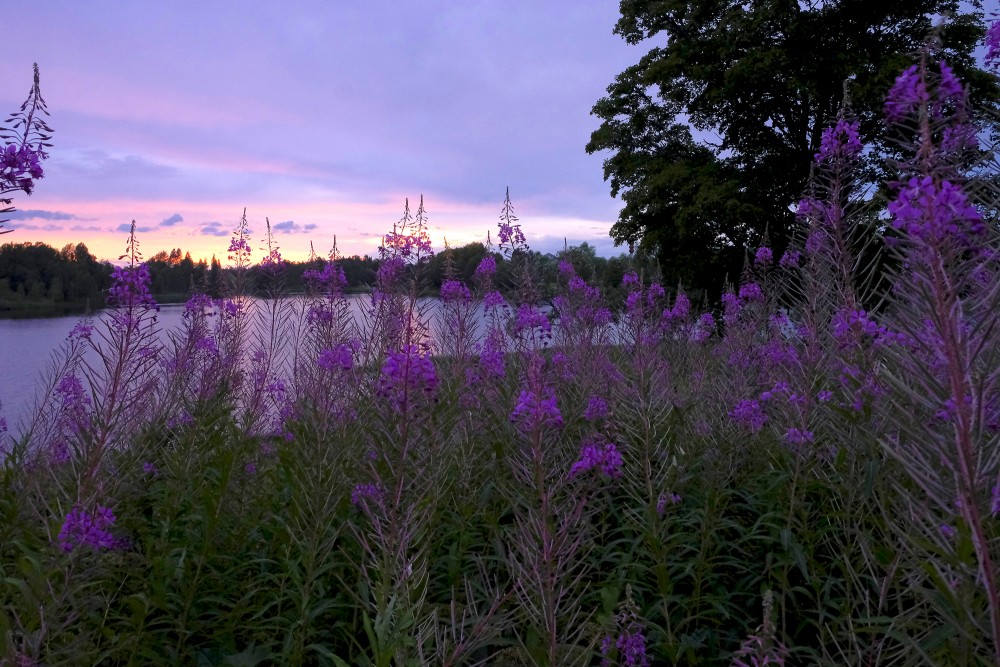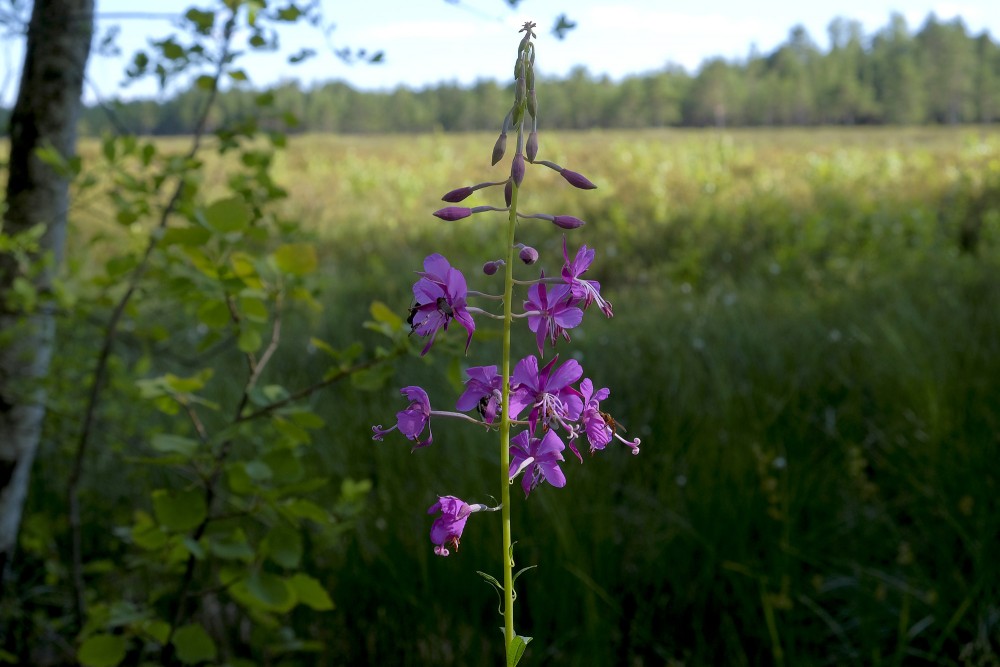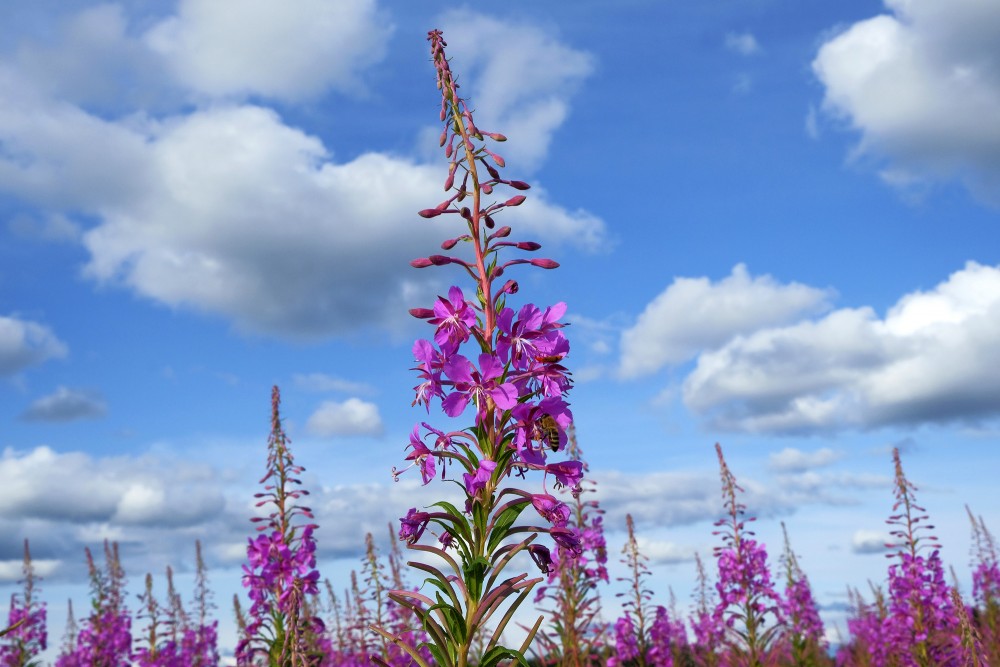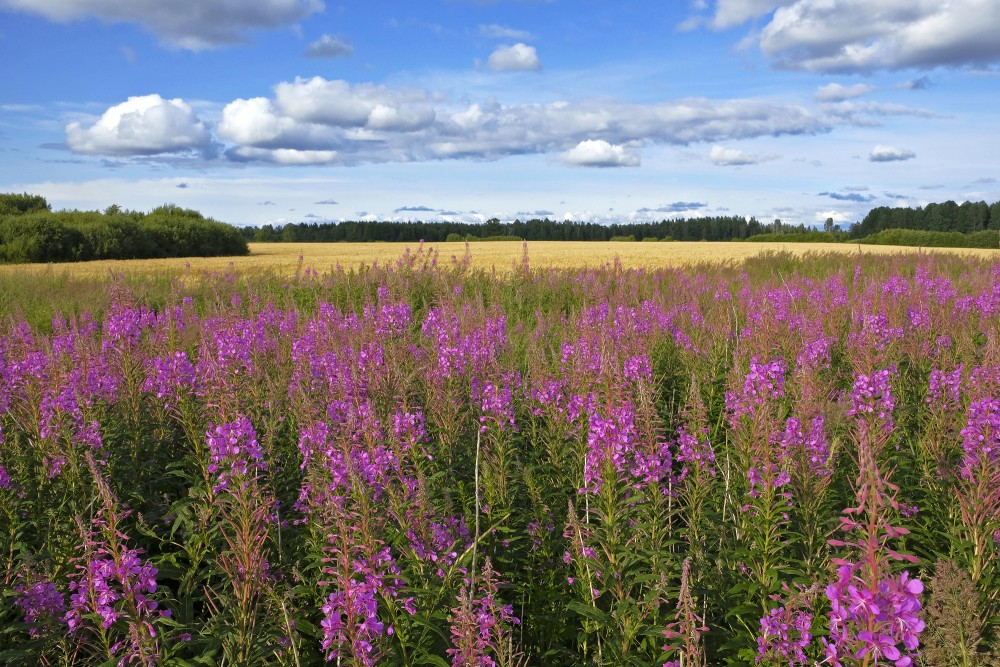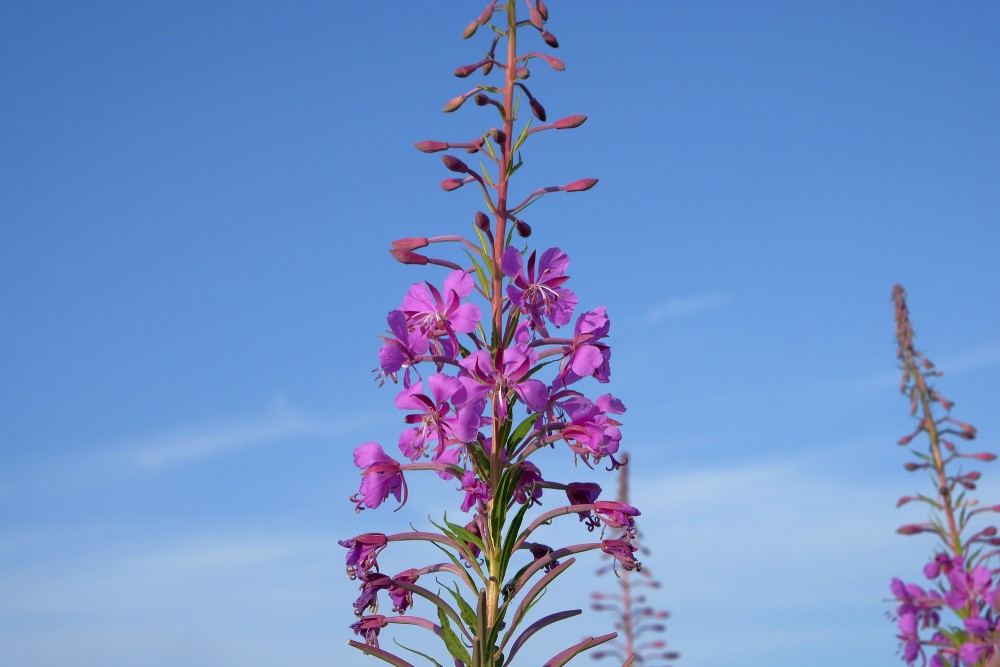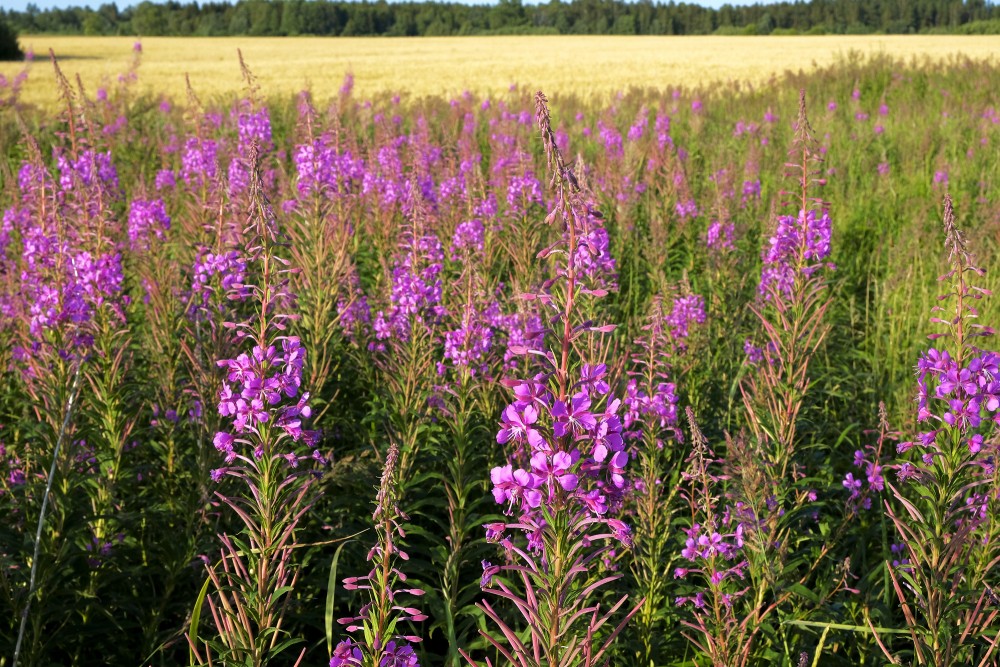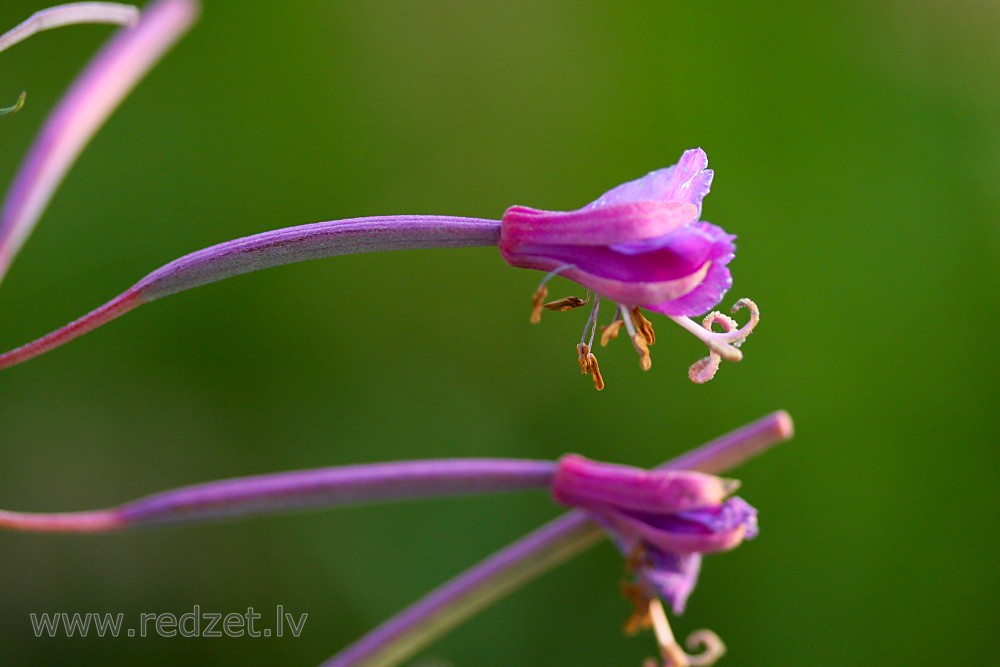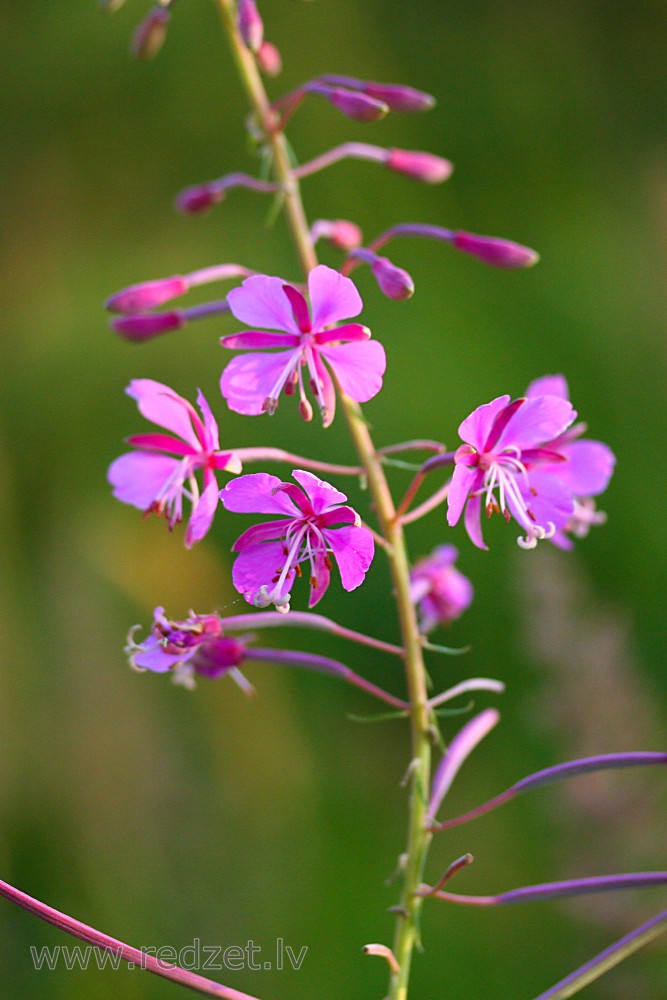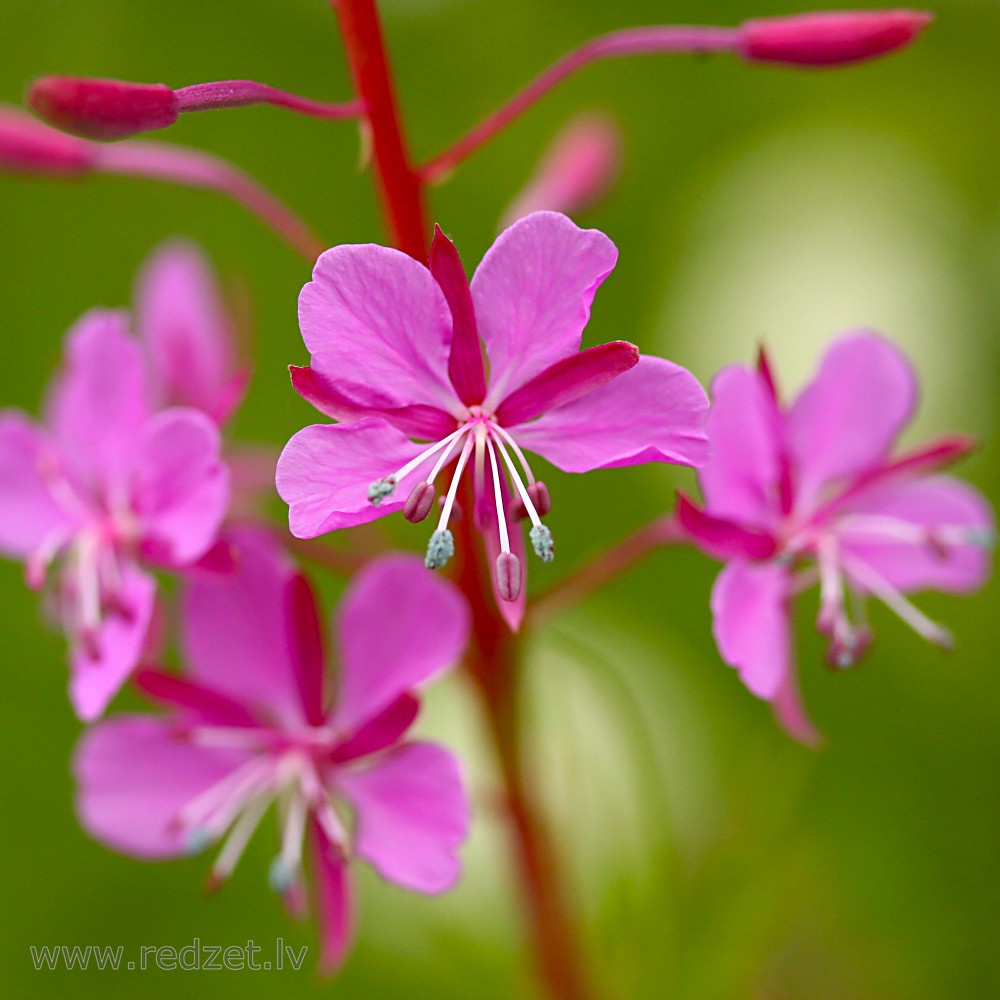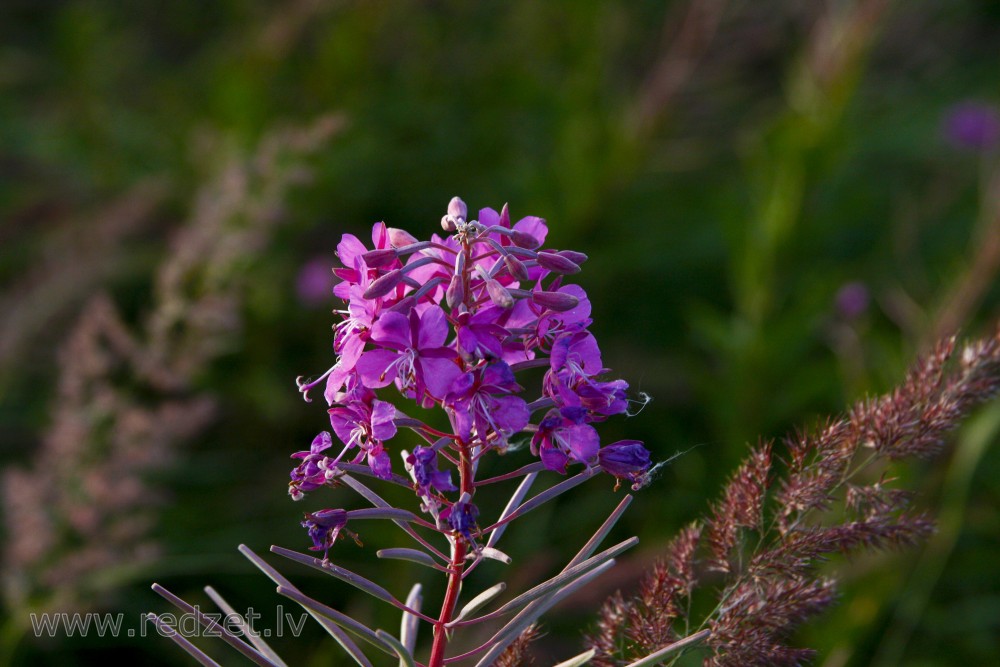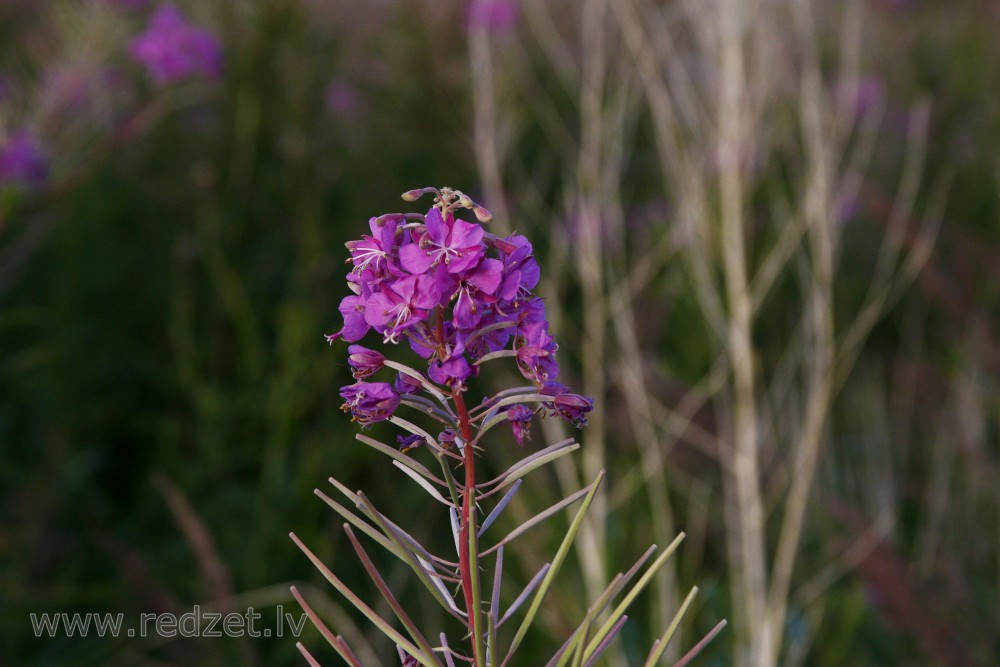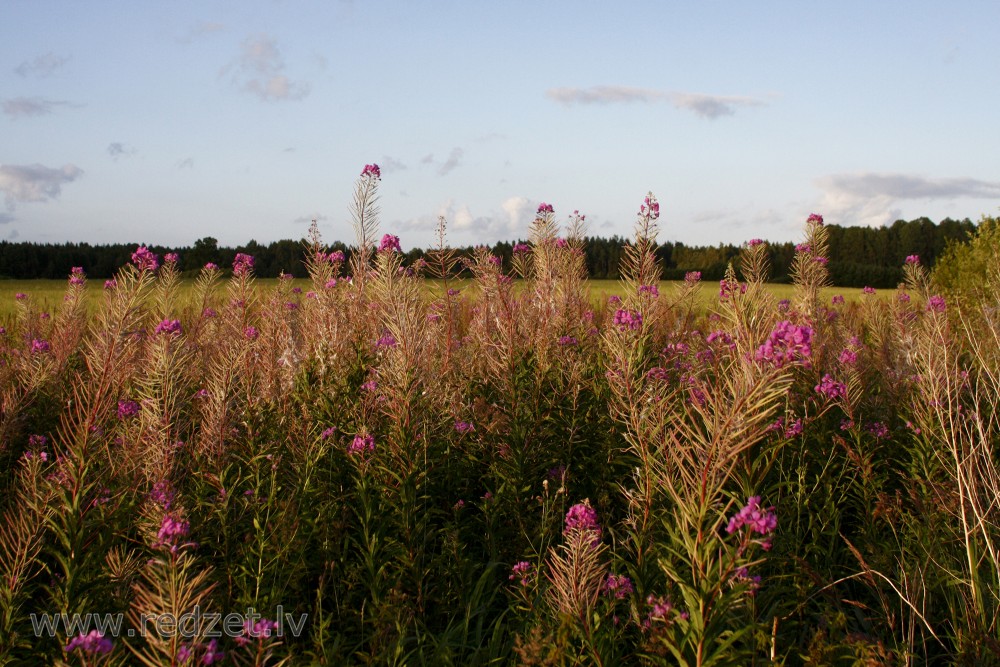Chamaenerion angustifolium (fireweed)
Fireweed, or Chamerion angustifolium (also known as Epilobium angustifolium) is a perennial angiosperm in the evening primrose (Onagraceae) family. The reddish, usually unbranched stalks of this tall, herbaceous wildflower range in height from 1 to 3 m, with spear-shaped leaves approximately 10 to15 cm long (Giblin and Knoke 2016). The smooth green leaves grow in an alternate arrangement with a white central vein present on most and a unique circular pattern of smaller veins that do not terminate at the edge of the leaf (Vizgirdas 2016). The flowers of this dicot consist of four bright pink or magenta petals from 8 to 20 mm long, with up to fifty on a single stalk, and four sepals of 8 to 12 mm. Reproductive organs at the center of these flowers include a prominent, four lobed stigma and 8 stamens with white filaments and large reddish anthers (Giblin & Knoke 2016).
C. angustifolium is native throughout Canada and most of the United States except for Kansas, Oklahoma, Texas, Missouri, Arkansas, Kentucky, and the southeastern states, although it is found in a few locations in northeast Tennessee and western North Carolina. In Indiana, Ohio, and North Carolina fireweed is classified as a Threatened or Endangered species, and in Tennessee it is a Species of Concern (Fleenor 2016; USDA 2016). It grows mainly in forest and alpine meadows, in semi-shaded mixed forests and forest edges, and along rivers and streams. And although this versatile plant can grow almost anywhere, it thrives in moist, well-drained soils. Its primary association is as an active colonizer of recently burned areas, behavior that has earned fireweed its name (Fleenor 2016; Vizgirdas 2016).
Fireweed grows on a perennial life cycle, blooming each year from June until September. It spreads mainly by its dispersal of seeds from bursting pods, but also through it wide-spreading roots, once they become established in an area (Shebitz 2003). The pods each contain around 350 seeds, which can total up to 80,000 seeds per plant per year (Vizgirdas 2016). Fireweed seeds are very distinct, as they have tufts of silk-like white hairs sprouting from them, which enable them to be picked up easily and spread by the wind. Due to its ability to spread and repopulate so quickly over large areas, fireweed has become an invasive pest in some locations (Fleenor 2016).
Many traditional cultures around the world have used fireweed for a variety of purposes. The stalks are often eaten, yielding high volumes of vitamins A and C, and the silky fibers growing from the seeds have been used for waving and padding by Native Americans. The leaves have long been used for teas and the abundant nectar from the flowers is often used to make honey, jellies, and syrup, especially in Alaska, due to the abundance of C. angustifolium in the area (Pojar and MacKinnon 2004; Vizgirdas 2016).
eol.org
Chamaenerion angustifolium, commonly known in North America as fireweed, in some parts of Canada as great willowherb, and in Britain as rosebay willowherb, is a perennial herbaceous plant in the willowherb family Onagraceae. It is also known by the synonyms Chamerion angustifolium and Epilobium angustifolium. It is native throughout the temperate Northern Hemisphere, including large parts of the boreal forests.
This species has been placed in the genus Chamaenerion (sometimes given as Chamerion) rather than Epilobium based on several morphological distinctions: spiral (rather than opposite or whorled) leaf arrangement; absence (rather than presence) of a hypanthium; subequal stamens (rather than stamens in two unequal whorls); zygomorphic (rather than actinomorphic) stamens and stigma. Under this taxonomic arrangement, Chamaenerion and Epilobium are monophyletic sister genera.
Two subspecies are recognized as valid:
Chamaenerion angustifolium subsp. angustifolium
Chamaenerion angustifolium subsp. circumvagum (Mosquin) Hoch
Description
The reddish stems of this herbaceous perennial are usually simple, erect, smooth, 0.5–2.5 m (1½–8 feet) high with scattered alternate leaves. The leaves are spirally arranged, entire, narrowly lanceolate, and pinnately veined, the secondary leaf veins anastomosing, joining together to form a continuous marginal vein just inside the leaf margins.
The inflorescence is a symmetrical terminal raceme that blooms progressively from bottom to top, producing a gracefully tapered shape. The flowers are 2 to 3 cm in diameter, slightly asymmetrical, with four magenta to pink petals and four narrower pink sepals behind. The protruding style has four stigmas. The floral formula is ✶/↓ K4 C4 A4+4 or 4+0 Ğ(4).
The upright, reddish-brown linear seed capsule splits from the apex and curls open. It bears many minute brown seeds, about 300 to 400 per capsule and 80,000 per plant. The seeds have silky hairs to aid wind dispersal and are very easily spread by the wind, often becoming a weed and a dominant species on disturbed ground. Once established, the plants also spread extensively by underground roots, an individual plant eventually forming a large patch.
Uses
Traditionally the young shoots are collected in the spring by Native American people and mixed with other greens. As the plant matures the leaves become tough and somewhat bitter. The southeast Native Americans use the stems in this stage. They are peeled and eaten raw. When properly prepared soon after picking they are a good source of vitamin C and pro-vitamin A. The Dena'ina add fireweed to their dogs' food. Fireweed is also a medicine of the Upper Inlet Dena'ina, who treat pus-filled boils or cuts by placing a piece of the raw stem on the afflicted area. This is said to draw the pus out of the cut or boil and prevents a cut with pus in it from healing over too quickly.
The root can be roasted after scraping off the outside, but often tastes bitter. To mitigate this, the root is collected before the plant flowers and the brown thread in the middle removed.
In Alaska, candies, syrups, jellies, and even ice cream are made from fireweed. Monofloral honey made primarily from fireweed nectar has a distinctive, spiced flavor.
In Russia, its leaves were traditionally used as a tea, before the introduction of tea from China starting in the 17th Century, it was greatly valued and was exported in large quantities to Western Europe as Koporye Tea (Копорский чай), Russian Tea or Ivan Chai. Fireweed leaves can undergo fermentation, much like real tea. Today, koporye tea or Ivan Chai is still commonly sold and consumed in Russia, though it is not nearly as popular as it was in Pre-Soviet Russia.
Fireweed's natural variation in ploidy has prompted its use in scientific studies of polyploidy's possible effects on adaptive potential and species diversification.
Because fireweed can colonize disturbed sites, even following an old oil spill, it is often used to reestablish vegetation.
It is also grown as an ornamental plant. A white form, C. angustolium 'Album' is listed by the Royal Horticultural Society
en.wikipedia.org
